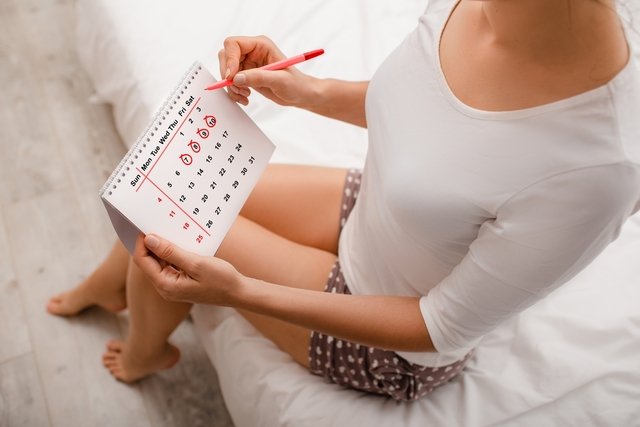Ovulation is the moment when the mature egg is released from the ovary towards the uterine tube, and can be fertilized by sperm.
Ovulation normally occurs in the middle of the menstrual cycle, and some symptoms may be noticed, such as transparent and thin vaginal secretion, similar to egg white, a slight increase in body temperature and mild cramping, the intensity of which may vary from one woman to another.
To better understand the menstrual cycle and identify the ovulatory period, it is recommended to consult a gynecologist, especially when more intense symptoms appear or when ovulation occurs later than expected.

How ovulation occurs
Ovulation occurs due to hormonal changes typical of the menstrual cycle, this period being known as the ovulatory phase. During this period, estrogen levels continue to increase and stimulate the production of luteinizing hormone (LH), which favors the release of the mature egg from the ovary to the fallopian tube approximately 10 to 12 hours after the hormonal peak. Better understand the menstrual cycle.
To better understand how ovulation happens and have more information about your menstrual cycle, make an appointment with your nearest gynecologist using the following tool:
Taking care of your health has never been easier!
When happens
Ovulation normally happens in the middle of the menstrual cycle, making it easier to identify in a regular cycle. In other words, considering the 28-day menstrual cycle, ovulation must occur on the 14th day of the cycle, which is counted from the 1st day of the last menstruation.
In the case of an irregular menstrual cycle, it is recommended that the probable fertile period be identified, which corresponds to the set of 6 days that involve ovulation. In this case, to calculate the fertile period, it is important to write down the duration of the last 3 cycles, add them up and take the average. Then subtract 14 days from the average. The result corresponds to the day of probable ovulation, while the fertile period corresponds to the 3 days before and after the date of probable ovulation. See more details on how to calculate the fertile period in an irregular menstrual cycle.
Ovulation calculator
If your menstrual cycle is regular, enter your data into the calculator below to find out your ovulation day:
Main symptoms of ovulation
The main symptoms of ovulation are:
- Clear and transparent vaginal secretion;
- Mild abdominal discomfort, as if it were a mild cramp;
- Increased libido;
- Slight increase in body temperature.
It is important to highlight that in some women the symptoms can be very subtle, so that they cannot notice that they are in the ovulatory period. Furthermore, women who use contraceptives do not ovulate. See more about ovulation symptoms.
When to go to the doctor
It is recommended that a gynecologist be consulted to better understand the menstrual cycle and the ovulatory period, especially when the cycle is irregular. This way, it is possible to plan or prevent pregnancy more effectively.
It is also recommended to consult a gynecologist when ovulation occurs after the normal period, which can delay menstruation, even in the case of a regular menstrual cycle. This situation may be a consequence of stress, medication use, thyroid changes or gynecological changes, and it is important to identify the cause to begin the best treatment. See more about late ovulation.
Furthermore, it is recommended that the doctor be consulted when bleeding or more intense pain is noticed during ovulation, as this may be a sign of gynecological changes, such as endometriosis, endometrioma, cystadenoma, polycystic ovary syndrome or dermoid cyst, for example. Discover the main causes of ovulation pain.

Sign up for our newsletter and stay up to date with exclusive news
that can transform your routine!
Warning: Undefined array key "title" in /home/storelat/public_html/wp-content/plugins/link-whisper-premium/templates/frontend/related-posts.php on line 12
Warning: Undefined array key "title_tag" in /home/storelat/public_html/wp-content/plugins/link-whisper-premium/templates/frontend/related-posts.php on line 13



